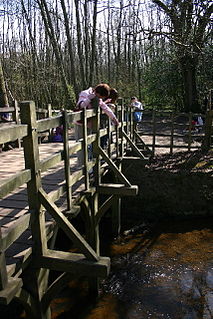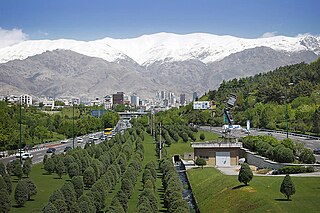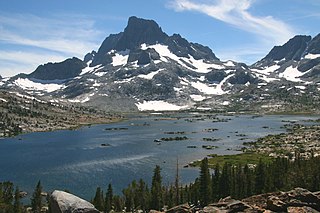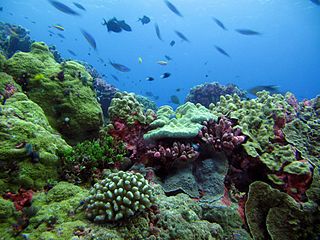 W
WProtected areas or conservation areas are locations which receive protection because of their recognized natural, ecological or cultural values. There are several kinds of protected areas, which vary by level of protection depending on the enabling laws of each country or the regulations of the international organizations involved. Generally speaking though, protected areas are understood to be those in which human presence or at least the exploitation of natural resources is limited.
 W
WAn animal sanctuary is a facility where animals are brought to live and to be protected for the rest of their lives. Pattrice Jones, co-founder of VINE Sanctuary defines an animal sanctuary as "a safe-enough place or relationship within the continuing hazards that menace everybody". In addition, sanctuaries are an experimental staging ground for transformative human-animal relations. There are four types of animal sanctuaries reflective of the species-belonging of the residents: 1) companion animal sanctuaries; 2) wildlife sanctuaries; 3) exotic animal sanctuaries; and 4) farmed animal sanctuaries.
 W
WThe Biosphere Reserve Großes Walsertal is a protected nature reserve in the Austrian state of Vorarlberg.
 W
WCommon land is land owned collectively by a number of persons, or by one person, but over which other people have certain traditional rights, such as to allow their livestock to graze upon it, to collect wood, or to cut turf for fuel.
 W
WA dark-sky preserve (DSP), also known as a dark-sky reserve, is an area, usually surrounding a park or observatory, that restricts artificial light pollution. The purpose of a dark-sky preserve is generally to promote astronomy.
 W
WDead Man's Hollow is a 450 acre conservation area located along the Youghiogheny River just south of the City of McKeesport, Pennsylvania. The conservation area spans three municipalities which include Liberty Borough, Lincoln Borough, and Elizabeth Township. The property is owned and managed by Allegheny Land Trust and is open year round to the public for educational and recreational purposes.
 W
WA game reserve is a large area of land where wild animals live safely or are hunted in a controlled way for sport. If hunting is prohibited, a game reserve may be considered a nature reserve; however, the focus of a game reserve is specifically the animals (fauna), whereas a nature reserve is also, if not equally, concerned with all aspects of native biota of the area.
 W
WA geopark is a unified area that advances the protection and use of geological heritage in a sustainable way, and promotes the economic well-being of the people who live there. There are global geoparks and national geoparks.
 W
WA green belt is a policy and land-use zone designation used in land-use planning to retain areas of largely undeveloped, wild, or agricultural land surrounding or neighboring urban areas. Similar concepts are greenways or green wedges, which have a linear character and may run through an urban area instead of around it. In essence, a green belt is an invisible line designating a border around a certain area, preventing development of the area and allowing wildlife to return and be established.
 W
WIUCN protected area categories, or IUCN protected area management categories, are categories used to classify protected areas in a system developed by the International Union for Conservation of Nature (IUCN).
 W
WMan and the Biosphere Programme (MAB) is an intergovernmental scientific program, launched in 1971 by UNESCO, that aims to establish a scientific basis for the improvement of relationships between people and their environments.
 W
WMarine protected areas (MPA) are protected areas of seas, oceans, estuaries or in the US, the Great Lakes. These marine areas can come in many forms ranging from wildlife refuges to research facilities. MPAs restrict human activity for a conservation purpose, typically to protect natural or cultural resources. Such marine resources are protected by local, state, territorial, native, regional, national, or international authorities and differ substantially among and between nations. This variation includes different limitations on development, fishing practices, fishing seasons and catch limits, moorings and bans on removing or disrupting marine life. In some situations, MPAs also provide revenue for countries, potentially equal to the income that they would have if they were to grant companies permissions to fish. The value of MPA to mobile species is unknown.
 W
WA marine reserve is a type of marine protected area that has legal protection against fishing or development. As of 2007 less than 1% of the world's oceans had been set aside in marine reserves. Benefits include increases in the diversity, density, biomass, body size and reproductive potential of fishery and other species within their boundaries.
 W
WA national park is a park in use for conservation purposes, created and protected by national governments. Often it is a reserve of natural, semi-natural, or developed land that a sovereign state declares or owns. Although individual nations designate their own national parks differently, there is a common idea: the conservation of 'wild nature' for posterity and as a symbol of national pride.
 W
WA natural monument is a natural or natural/cultural feature of outstanding or unique value because of its inherent rarity, representative of aesthetic qualities or cultural significance.
 W
WA nature reserve, is a protected area of importance for flora, fauna, or features of geological or other special interest, which is reserved and managed for purposes of conservation and to provide special opportunities for study or research. They may be designated by government institutions in some countries, or by private landowners, such as charities and research institutions. Nature reserves fall into different IUCN categories depending on the level of protection afforded by local laws. Normally it is more strictly protected than a nature park. Various jurisdictions may use other terminology, such as ecological protection area or private protected area in legislation and in official titles of the reserves.
 W
WAn open space reserve is an area of protected or conserved land or water on which development is indefinitely set aside.
 W
WA park is an area of natural, semi-natural or planted space set aside for human enjoyment and recreation or for the protection of wildlife or natural habitats. Urban parks are green spaces set aside for recreation inside towns and cities. National parks and country parks are green spaces used for recreation in the countryside. State parks and provincial parks are administered by sub-national government states and agencies. Parks may consist of grassy areas, rocks, soil and trees, but may also contain buildings and other artifacts such as monuments, fountains or playground structures. Many parks have fields for playing sports such as baseball and football, and paved areas for games such as basketball. Many parks have trails for walking, biking and other activities. Some parks are built adjacent to bodies of water or watercourses and may comprise a beach or boat dock area. Urban parks often have benches for sitting and may contain picnic tables and barbecue grills.
 W
WA protected area mosaic, or conservation mosaic is a collection of environmentally protected areas that are treated as a whole, either formally or informally. The protected areas may be of different types, including strictly protected areas and sustainable use areas, which may be administered at different public levels or privately. They may include areas assigned to indigenous people. A mosaic may be more flexible and effective than an attempt to combine all the areas into a single conservation unit under one agency. In practice, results with mosaics in different countries have been mixed.
 W
WA recreation area is a type of protected area designated in some jurisdictions.
 W
WA strict nature reserve or wilderness area is the highest category of protected area recognised by the World Commission on Protected Areas (WCPA), a body which is part of the International Union for Conservation of Nature (IUCN). These category I areas are the most stringently protected natural landscapes.
 W
WA town square is an open public space commonly found in the heart of a traditional town used for community gatherings. Related concepts are the civic center, the market square and the village green.
 W
WA transboundary protected area (TBPA) is an ecological protected area that spans boundaries of more than one country or sub-national entity. Such areas are also known as transfrontier conservation areas (TFCAs) or peace parks.
 W
WAn urban biosphere reserve is an attempt to apply the biosphere reserve concept to urban areas by the MAB Programme of UNESCO. Through urban planning and ecosystem management, an urban biosphere reserve is expected to support sustainable development and conservation. Brighton and Hove is bidding to become the world's first urban biosphere reserve.
 W
WIn land-use planning, urban green space is open-space areas reserved for parks and other "green spaces", including plant life, water features -also referred to as blue spaces- and other kinds of natural environment. Most urban open spaces are green spaces, but occasionally include other kinds of open areas. The landscape of urban open spaces can range from playing fields to highly maintained environments to relatively natural landscapes.
 W
WA wild river or heritage river (Canada) is a river or a river system designated by a government to be protected and kept "relatively untouched by development and are therefore in near natural condition, with all, or almost all, of their natural values intact."
 W
WA Wildlife Management Area (WMA) is a protected area set aside for the conservation of wildlife and for recreational activities involving wildlife.
 W
WThe World Database on Protected Areas (WDPA) is the largest assembly of data on the world's terrestrial and marine protected areas, containing more than 260,000 protected areas as of August 2020, with records covering 245 countries and territories throughout the world. The WDPA is a joint venture between the United Nations Environment Programme World Conservation Monitoring Centre and the International Union for Conservation of Nature World Commission on Protected Areas.
 W
WA World Heritage Site is a landmark or area with legal protection by an international convention administered by the United Nations Educational, Scientific and Cultural Organization (UNESCO). World Heritage Sites are designated by UNESCO for having cultural, historical, scientific or other form of significance. The sites are judged to contain "cultural and natural heritage around the world considered to be of outstanding value to humanity". To be selected, a World Heritage Site must be a somehow unique landmark which is geographically and historically identifiable and has special cultural or physical significance. For example, World Heritage Sites might be ancient ruins or historical structures, buildings, cities, deserts, forests, islands, lakes, monuments, mountains, or wilderness areas. A World Heritage Site may signify a remarkable accomplishment of humanity, and serve as evidence of our intellectual history on the planet, or it might be a place of great natural beauty. As of June 2020, a total of 1,121 World Heritage Sites exist across 167 countries. With 55 selected areas each, China and Italy are the countries with the most sites on the list.